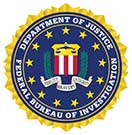|

 |
FBI Releases
2014 Hate Crime Statistics
Washington, D.C.
November 16, 2015
Today, the FBI released Hate Crime Statistics, 2014, the Uniform Crime
Reporting (UCR) Program’s latest compilation about bias-motivated
incidents throughout the nation. Submitted by 15,494 law enforcement
agencies, the data provide information about the offenses, victims,
offenders, and locations of hate crimes; however, the UCR Program does
not estimate offenses for the jurisdictions of agencies that do not
submit reports. Highlights of Hate Crime Statistics, 2014 follow.
Law enforcement agencies submitted incident reports
involving 5,479 criminal incidents and 6,418 offenses as being
motivated by bias toward race, gender, gender identity, religion,
disability, sexual orientation, and ethnicity in 2014. The numbers are
down from 2013 when 5,928 criminal incidents were reported involving
6,933 offenses.
There were 5,462 single-bias incidents involving
6,681 victims. A percent distribution of victims by bias type showed
that 48.3 percent of victims were targeted because of the offenders’
racial bias, 18.7 percent were victimized because of the offenders’
sexual-orientation bias, 17.1 percent were targeted because of the
offenders’ religious bias, and 12.3 percent were victimized due to
ethnicity bias. Victims targeted because of the offenders’ bias against
gender identity accounted for 1.6 percent of victims of single-bias
incidents; disabilities, 1.4 percent; and gender, 0.6 percent.
There were 17 multiple-bias hate crime incidents
involving 46 victims.
Of the 4,048 hate crime offenses classified as
crimes against persons in 2014, intimidation accounted for 43.1
percent, simple assault accounted for 37.4 percent, and aggravated
assault for 19.0 percent. Four murders and nine rapes (all nine from
agencies that collected data using the revised rape definition) were
reported as hate crimes.
Beginning with the 2013 data
collection, the UCR Program’s revised definition of rape is
“Penetration, no matter how slight, of the vagina or anus with any body
part or object, or oral penetration by a sex organ of another person,
without the consent of the victim.” [This includes the offenses of
rape, sodomy, and sexual assault with an object as converted from data
submitted via the National Incident-Based Reporting System (NIBRS).]
The UCR Program’s legacy
definition of rape is “The carnal knowledge of a female forcibly and
against her will.”
There were 2,317 hate crime offenses classified as
crimes against property. The majority of these (73.1 percent) were acts
of destruction/damage/vandalism. Robbery, burglary, larceny-theft,
motor vehicle theft, arson, and other offenses accounted for the
remaining 26.9 percent of crimes against property.
In the UCR Program, the term known offender does not
imply that the suspect’s identity is known; rather, the term indicates
that some aspect of the suspect was identified, thus distinguishing the
suspect from an unknown offender. Law enforcement agencies specify the
number of offenders and, when possible, the race of the offender or
offenders as a group. Beginning in 2013, law enforcement officers could
also report whether suspects were juveniles or adults, as well as the
suspect’s ethnicity when possible.
Of the 5,192 known
offenders, 52.0 percent were white, and 23.2 percent were black or
African-American. The race was unknown for 16.0 percent. Other races
accounted for the remaining known offenders: 1.1 percent were American
Indian or Alaska Native; 0.8 percent were Asian; less than 0.1 percent
were Native Hawaiian or Other Pacific Islander; and 6.9 percent were of
a group of multiple races.
Of the 1,875 offenders for
whom ages were known, 81.0 percent were 18 years of age or older.
Of the 975 offenders for
whom ethnicity was reported, 47.6 percent were Not Hispanic or Latino,
6.5 percent were Hispanic or Latino, and 1.7 percent were in a group of
multiple ethnicities. Ethnicity was unknown for 44.2 percent of these
offenders.
• Most hate crime incidents (31.6 percent) occurred in or near
residences/homes. Nearly 18 percent (17.8) occurred on
highways/roads/alleys/streets/sidewalks; 8.6 percent occurred at
schools/colleges; 6.3 percent happened at parking/drop lots/garages;
and 3.6 percent took place in churches/synagogues/temples/mosques. The
location was considered other/unknown for 11.9 percent of hate crime
incidents. The remainder of hate crime incidents took place at other
specified or multiple locations.
|
|
|
|

